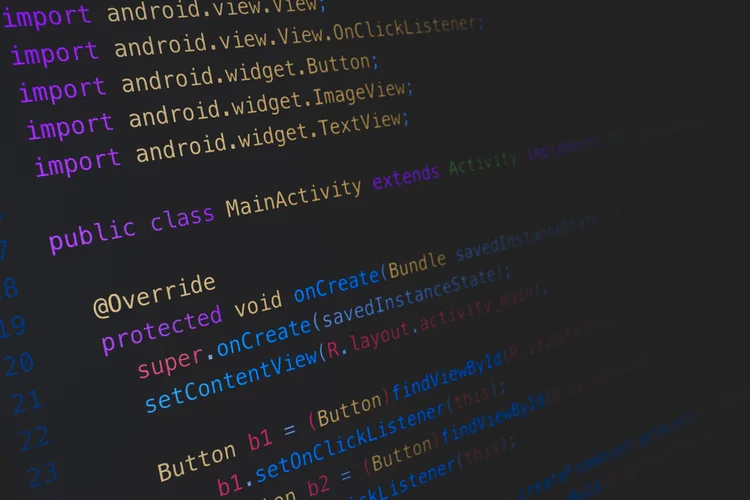The -strategy choice controls what motion shall be taken when one of many specified plugins is listed as an optionally available or mandatory dependency of another enabled plugin. In instances where an older release of the plugin is desired,
The main open supply automation server, Jenkins offers hundreds of plugins to support building, deploying and automating any project. This characteristic is further useful, pipeline library builders because it lets you wrap pod templates into capabilities and let users nest those functions in accordance with their wants.
What Can Plugins Do?
You can use readFile or readTrusted steps to load the yaml from a file. Also notice that in declarative pipelines the yamlFile can be used (see this example). For Declarative Pipeline, just add the retries option, as shown beneath. The container step allows executing commands into each container.
to the plugin and clicking Install with out restart. This section covers every little thing from the basics of managing plugins inside the Jenkins net UI, to creating adjustments on the controller’s file system. The grasp will must be restarted before the plugin is loaded and made obtainable within the Jenkins environment.

Plugins that implement Pipeline steps or integrate with Pipeline-related APIs should not rely upon workflow-aggregator as a outcome of it contains many unncessary dependencies. Instead, they need to depend solely on the plugins that provide the APIs necessary for the integration. For the common case of implementing a Pipeline step, plugins usually solely must depend on workflow-step-api. In order to test Pipeline-related performance, plugins want test-scope dependencies on workflow-job and workflow-cps.
Multiple Containers Assist
Clicking the Check now button will pressure Jenkins to try to contact its configured Update Center. When a freestyle job or a pipeline job utilizing node(‘some-label’) makes use of a label declared by a pod template, the Kubernetes Cloud allocates a brand new pod to run the Jenkins agent. The commits in the local workspace have been evaluated by the job. The most recent commits from the remote repository have not been evaluated by the job. Users could discover that the risk of pushing an untested configuration is less than the risk of delaying the visibility of the adjustments which have been evaluated by the job.
The git plugin polls remotely using ls-remote when configured with a single branch (no wildcards!). When this extension is enabled, the polling is performed from a cloned copy of the workspace as a substitute of using advantages of jenkins ls-remote. Clean the workspace before every checkout by deleting all untracked recordsdata and directories, together with these that are specified in .gitignore.
- If the build status is unstable, failed, or canceled, the adjustments from the workspace won’t be pushed.
- There are over a thousand plugins out there in the Jenkins plugins repository, however only a few of them could be considered essential.
- The idea behind this plugin is that when you’ve a lot of jobs to handle, utilizing the User Interface could be a tedious task.
- /var/lib/jenkins).
- This plugin provides Subversion repositories as an option within the SCM part of the job configurations screen.
- output will show messages for each profitable and failed operations.
Git uses the ‘remote name’ as a brief string replacement for the total URL of the distant repository. This is often origin, though it could be any one of the distant names outlined when the plugin performs the checkout. There are not any identified uses of the submodule combinator and no open Jira points reported towards the submodule combinator.
When you activate these plugins, you might even see them putting in a custom construct technique. The plugin can calculate the source code differences between two builds. Changelog extensions adapt the changelog calculations for different cases. Removes tags from the local workspace earlier than fetch if they now not exist on the distant. If stale tags aren’t pruned, deletion of a remote tag won’t take away the native tag within the workspace. If the native tag already exists within the workspace, git correctly refuses to create the tag once more.
Other git repositories can use a post-receive hook within the distant repository to inform Jenkins of adjustments. They are chosen from a drop-down listing and their identifier is saved within the job definition. Refer to using credentials for extra details on supported credential types. The examples beneath had been created with the Pipeline Syntax Snippet Generator. Create your personal checkout commands with the Pipeline Syntax Snippet Generator configured in your wants.
Releasing A Plugin And Internet Hosting A Plugin On Jenkins-ciorg
creates an empty file referred to as JENKINS_HOME/plugins/PLUGIN_NAME.jpi.pinned to point the pinning. If the listing of available plugins is empty, the controller may be incorrectly configured or has not but downloaded plugin meta-data from the Update Center. Clicking the Check now button forces Jenkins to attempt to contact its

If the parent project is cloned with ssh, then the authenticated submodule references should use ssh as well. Checkout extensions modify the git operations that place recordsdata in the workspace from the git repository on the agent. The extensions can adjust the maximum period of the checkout operation, the use and conduct of git submodules, the situation of the workspace on the disc, and extra.
Updating A Plugin
An experiment was created a few years in the past that tried to create combinations of submodules inside the Jenkins job. The experiment was by no means available to Freestyle projects or different legacy initiatives like multi-configuration tasks. This extension level in Jenkins is utilized by many different plugins to control the job because it builds particular commits.

When you find the plugin that you’re on the lookout for, there will be a checkbox to the left of the plugin name. Checking the checkbox, and clicking the Install with out restart will take you to the set up screen. Installing plugins is a reasonably easy task that involves navigating via a quantity of menus and clicking a couple of buttons. When you log in, the first page you may be presented with is the Jenkins dashboard. On the left aspect, there will be a menu with a Manage Jenkins button. Packages marked third get together will not be updated as frequently as packages supported by the Jenkins project immediately.
uninstalled plugins. Navigate to Manage Jenkins and then click on on Manage Old Data to evaluate and take away old knowledge. A plugin can also be uninstalled by removing the corresponding .jpi

set up that on the Jenkins grasp. Plugins are the primary means of enhancing the performance of a Jenkins surroundings to suit organization- or user-specific needs.
Enabling Jgit
The example under composes two totally different pod templates to be able to create one with maven and docker capabilities. If no matching container template is found, the template is added as is. If you verify WebSocket then agents will connect over HTTP(S) rather than the Jenkins service TCP port. Name of the repository, corresponding to origin, that contains the department. If left blank, it’ll default to the name of the first repository configured.
Extensions add new habits or modify existing plugin habits for various uses. Extensions assist users extra precisely tune the plugin to fulfill their wants. New user accounts are created in Jenkins for committers and authors identified in changelogs. The new user accounts are added to the inner Jenkins database.
However, there could also be times when overwriting commits on the remote repository is acceptable and even desired. If the commits from the local workspace should overwrite commits on the distant repository, enable this feature. It will request that the remote repository destroy historical past and replace it with history from the workspace.
